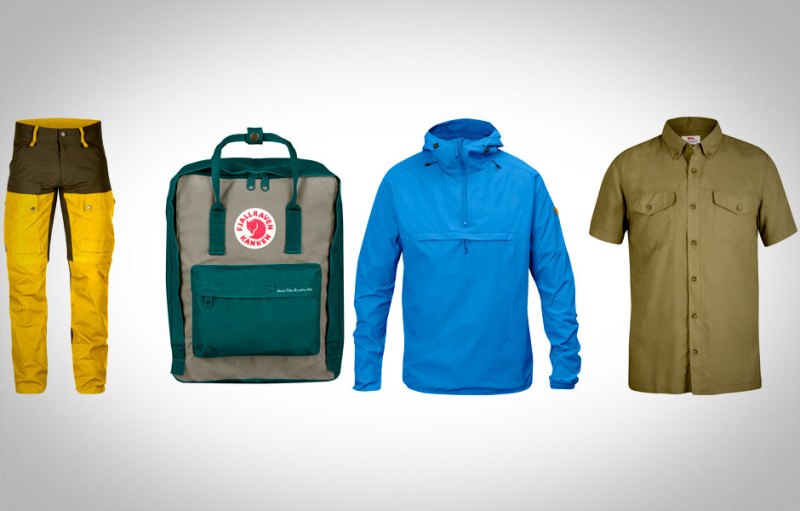
Related: The Best Hiking Shirts | Feit Wool Hiker
Keb Gaiter Trousers ($225)
Fjallraven’s signature G-1000 material reinforces the Keb Gaiter Trousers in key places like the knees and instep, making them ultra durable. This new version of the award winning Keb features a zip-off conversion into shorts. You can keep the lower portion on your legs with a drawstring closure and boot hook to protect your legs when walking through high brush or scrambling up steep rock. Stretch panels through the inner thigh, seat, and back of the knees provide breathability and comfort when temperatures climb. If you’re looking for a hiking pant that departs from the typical cheap technical fabric and cookie-cutter design, the Kebs provide the best option for the design conscious trekker who deserves the very best.
Kanken Backpack ($75)
The Kanken series of backpacks has been around since 1978. In the nearly forty years that they have been in production, they’ve gone from being a simple school bag for Swedish children to a global icon. Made from Fjallraven’s Vinylon polypropylene fabric, the Kanken excels at shedding moisture. The simple design provides everything you need to a light day hiking load, and new variants built for urban commuters will organize all your portable electronics when you’re on the road.
High Coast Wind Anorak ($180)
Anorak style jackets may have fallen out of favor here in the US, but the pull-over design is alive and well. The High Coast is a perfect summer layering piece, combining soft organic cotton with a polyamide blend. It is wind resistant, and like the G-1000 canvas of the Kebs, is waxed for water resistance and quick drying. The kangaroo pouch in the front doubles as a pack bag, helping you keep it organized when stashed in a day pack. It is perfect for early morning hikes and late evenings on the water fishing or paddling.
Abisko Vent Shirt ($110)
The Abisko line is designed around hybrid fabrics and light weight trekking. The vent shirt is our favorite of the apparel collection, especially for long days when it pulls office duty in the morning, and helps us sneak away for an afternoon fly fishing session and bar crawl afterward. The light fabric is complemented by a vented yoke and mesh gusseting under the arms, helping dump heat when you’re on the trail. The button-down collar and chest pockets recall simple safari and photographer shirts, with updated styling for the modern adventurer.


